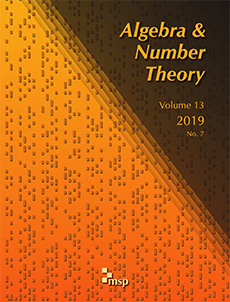Abstract
In this article, we construct -friezes using Plücker coordinates, making use of the cluster structure on the homogeneous coordinate ring of the Grassmannian of -spaces in -space via the Plücker embedding. When this cluster algebra is of finite type, the -friezes are in bijection with the so-called mesh friezes of the corresponding Grassmannian cluster category. These are collections of positive integers on the AR-quiver of the category with relations inherited from the mesh relations on the category. In these finite type cases, many of the -friezes arise from specializing a cluster to 1. These are called unitary. We use Iyama–Yoshino reduction to analyze the nonunitary friezes. With this, we provide an explanation for all known friezes of this kind. An appendix by Cuntz and Plamondon proves that there are 868 friezes of type .
Citation
Karin Baur. Eleonore Faber. Sira Gratz. Khrystyna Serhiyenko. Gordana Todorov. "Friezes satisfying higher $\mathrm{SL}_k$-determinants." Algebra Number Theory 15 (1) 29 - 68, 2021. https://doi.org/10.2140/ant.2021.15.29
Information





